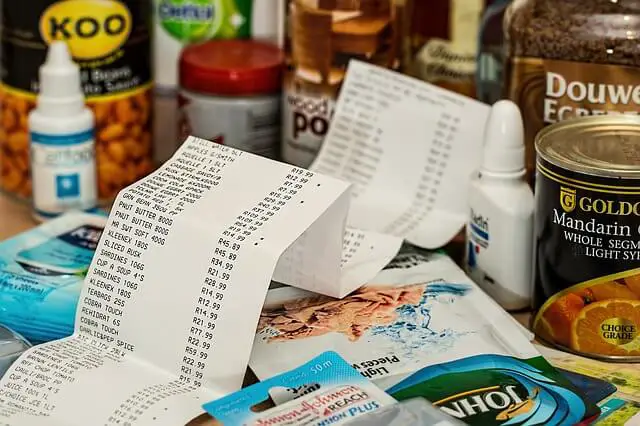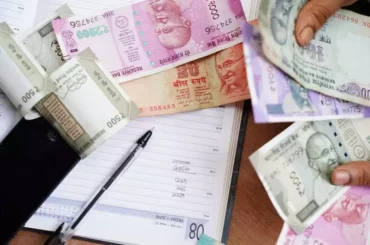Information presented on this web page is intended for informational and educational purposes only and is not meant to be taken as legal, financial, investment or tax advice. We do not accept any responsibility for any trading or investment related losses. Please review our disclaimer on before taking action based upon anything you read or see.
Creating a budget can be a chore. It might sound boring even too many ears, but the truth is that only with a schematic budget can you have straightforward personal finances. Thus, we have highlighted 5 hacks to create a budget below. Furthermore, a budget works as a forecast in the field of financial planning. It also tells of how much it will be possible to spend to carry out a project.
To carry out a budget, it is necessary to consider the amount available today, or that may be accessible in some time, for which you will be able to use it. There are different budgets, such as public, business, family, and personal budgets, and what they have in common: measuring and tracking an estimate of what you can spend.
The concept of a reasonable budget is not just spending what you collect but using your resources to the best advantage possible.
5 Hacks to Create a Budget

A budget stands for a written plan that will help you know and decide how to spend your money every month. Its success lies in the fact that you will learn to manage yourself better and avoid unnecessary debts and expenses thanks to it.
Budgeting helps you see all your money in the bigger picture. And it is not difficult. Thus, these hacks will help you in creating a budget quickly:
Read More: How to Deal With Being Poor
Write down how much money you get
This is as simple as putting how much money goes into your pocket either for a salary or an allowance. Then, of course, you must analyze and include all the sources of income you have (a job, a small business that you have done with your hobby, money that an aunt always sends you, etc.).
But write it with a tax or other discounts included. This way, you will know the amount of real money you have, and you will adjust your expenses better. Furthermore, you will learn how much you can save. It will also prevent you from falling short in case of an emergency or unforeseen event.
68 percent of Americans tend to have fewer than $1,000 in their term deposits, as per a new GOBankingRates poll. As a result, a decent principle is to save 20% of your earnings or take-home payment, which leaves you with 80% of your take-home remuneration to spend for essential bills and even a few binges once you’ve saved 20%.
Identify your expenses
For the second hack, you need to know how much you will spend and on what. Therefore, make a list of fixed expenses and variable expenses. The landlines are the same month after month (university, cell phone, passage, or gasoline).
If you have just gotten your first job, keep in mind that insurance in your house will assign you another permanent expense (electricity bill, telephone, etc.) This is something that you did not have to deal with when you were not working. The emotional part that no one told you had your salary.
If you have fixed expenses that vary from month to months, such as what you spend on gasoline or living room, give it an average figure. For instance, if it was $ 800 last month, it was $850, and then calculates an extra $50 to cover you.
Thus, the final amount to be placed as a fixed expense for the month would be $900. But, remember to first get out of your fixed expenses before taking out what will be your variable expenses.
Next, calculate the non-permanent expenses that you can control in some way (clothes, going to the movies, going out to restaurants, etc.).
Organize your expenses into categories
Once you have collected the information on your expenses and chosen the means to record them, you have to sort them into categories to identify where your money is going, according to your needs and projects.
The categories that each person in your budget uses will be different. For example, a married person with children does not have the same expenses as a single person who rents an apartment with friends.
You can use an automated classifier to sort your expenses into categories, such as:
- Food
- Home
- Education and Work
- Auto and Transportation
- Health and Beauty
- Travel, among others.
In turn, each category can have subcategories so that your budget is as specific as you want. The most beautiful thing about an automated platform is that you will not have to categorize each expense manually. That is, if you buy a hamburger today and pay for it with your debit or credit card, it will go directly to the Restaurants subcategory.
Likewise, your purchases in the supermarket will go to the Pantry subcategory, which you will include in the Food category. This further saves you time, and you will only have to make a few adjustments in more specific cases. Ideally, you can also use equal to but not more than 30% towards non-compulsory spending.
Find a suitable method of operation
If you are already clear about organizing your expenses, choose the best way not to get out of this budget. A guide can be to pay off all your fixed expenses first, then put your savings in a notebook.
Another option is to have a debit card in which you deposit these variable expenses and that you use while you are making each consumption. Furthermore, if you have multiple credit cards, consider transferring your balances to a balance transfer credit card to enjoy 0% interest for 12-21 months. If another card you own gives you 10 percent cash back for Amazon purchases, you should make sure you use that card whenever you shop on Amazon.com.
Your first two months of budgeting, a good recommendation is to write down the steps you took, how you paid off debts and how you controlled your variable expenses. The idea is that if you make a mistake and get out of it, don’t throw in the towel. Instead, try to improve what you did wrong and not repeat it the following month.
In principle, your pocket may feel a little boxed in, but it is only a matter of time, discipline, and habits.
Create budgets
You already have an idea of how to prioritize the use of your money. Now, please do not lose sight of them. Remember that a budget stands as an estimate of expenses, an estimate that you must constantly monitor and compare with your actual expenses.
You would have three columns with the category, the budget amount, and the amount spent in a traditional budget. You can see this in the table highlighted below:
| Category | Budget amount | Budget amount spent |
| Rent | $ 3,100 | $ 3,100 |
| Restaurant | $ 1,000 | $ 800 |
| Film and Music | $ 700 | $ 400 |
| Total | $ 4,800 | $ 4,200 |
When you create your budget in a tabular form, you must define which categories you will consider. You must also assign a specific amount of spending to each of them. If you have any leftovers, don’t forget to add them to your savings.
Frequently Asked Questions
What are the three types of budgets?
The three most essential budget types that many business companies use includes:
- Capital budgeting
- Operating budgeting
- Cash flow budgeting.
What is the first step in creating a budget?
The first step in creating a budget is to identify your expenses. A simple way to start is that as you make your expenses, you register them. Then, in the same way, use all the information that is at your fingertips: tickets, invoices, account statements, and also remember payments in cash.
Then you have to choose a means to record your expenses, be it a notebook, an Excel file, or better yet, an automated application such as Branch Metrics that will make your life easier. Also, Branch Metrics reveals that SMS has an 18 percent click-to-install rate — the second best-performing channel behind Facebook.
A user recently said he sometimes gets like 5% reach despite having 50,000 followers. This simple strategy further helped AudioBooks.com generate a 40 percent increase in its daily downloads while climbing from number 10 to number 6 in the “Books” category.
What should I eat on a very tight budget?
You can eat the following when on a very tight budget:
- Eggs
- Beans
- Seeds
- Frozen fruits
- Vegetables
- Cheaper cuts of meat
- .Whole grains.
In all, these are very cheap, nutritious, and taste great.
What is another word for a tight budget?
Another word for a tight budget is a shoestring budget.
What is the 30-day rule?
The 30-day rule entails that whenever you desire to make an impulse buy, restrict yourself and give it a rethink after 30 days. If you still wish to buy the same product after 30 days, then you can go ahead.
What is the 70 20 10 Rule of money?
The 70 20 10 Rule of money entails dividing your monthly take-home income by 70%, 20%, and 10%. Next, label the percentages thus:
- 70% goes into your monthly expenses
- 20% goes exclusively into your savings
- 10% goes into donations
How do I make a budget spreadsheet?
To make a budget spreadsheet, do use the following steps:
- Step 1: Pick an application that can create and edit spreadsheet files.
- Step 2: Pick a Template
- Step 3: Put in your desired numbers
- Step 4: Check out the results you’ve gotten
Conclusion
In conclusion, knowing the most appropriate way to prepare a budget is the first step to overcoming obstacles that always prevent you from reaching your financial goals. To this end, the highlight on the 5 Hacks to Create a Budget highlighted above would be indispensable for all.






